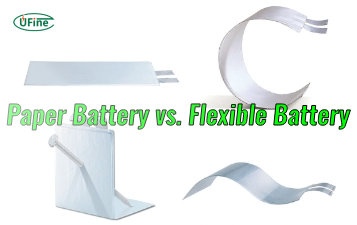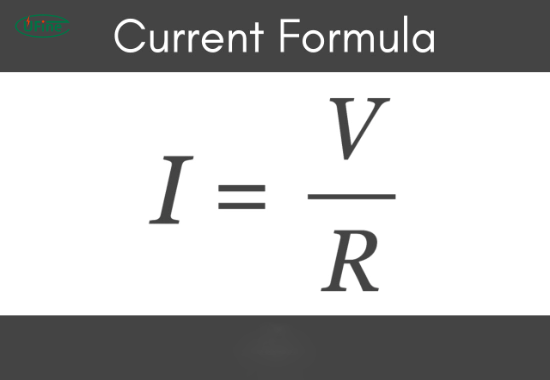Understanding the maximum allowable AC in amperes ensures safety and efficiency in electrical systems. This knowledge is essential for engineers, electricians, and anyone involved in electrical installations. This article will explore the concept of AC, its significance, factors influencing its maximum limits, and practical applications. Additionally, we’ll clarify the differences between AC and DC currents to provide a comprehensive overview.
Part 1. What is AC current?
An alternating Current (AC) is an electric current that periodically reverses direction. Unlike Direct Current (DC), which flows steadily in one direction, AC oscillates back and forth. This characteristic makes AC suitable for power distribution in homes and industries.
Key Characteristics of AC Current
- Frequency: Frequency, measured in hertz (Hz), indicates how often the current changes direction per second. In most countries, the standard frequency is either 50 Hz or 60 Hz.
- Voltage: AC voltage varies over time. People usually express it as an RMS (Root Mean Square) value, providing an equivalent DC voltage to deliver the same power.
- Phase: In multi-phase systems (like three-phase power), multiple AC currents are generated at different stages to improve efficiency.
Part 2. Why is knowing the maximum allowable AC current important?
Understanding the maximum allowable AC is vital for several reasons:
- Safety: Exceeding the maximum current can lead to overheating, equipment damage, or even electrical fires.
- Equipment Longevity: Operating within specified limits helps extend the lifespan of electrical devices.
- Regulatory Compliance: Many regions have strict regulations governing electrical installations to ensure that safety standards remain compliant.
Part 3. Factors influencing maximum allowable AC current
Several factors determine the maximum allowable AC in a given system:
1. Wire Gauge
The thickness of the wire significantly affects its capacity to carry current. Thicker wires can handle more current without overheating.
2. Ambient Temperature
Higher temperatures can reduce a wire’s ability to dissipate heat, thus lowering its maximum allowable current.
3. Insulation Type
Different insulation materials have varying temperature ratings and thermal properties, influencing how much current a wire can safely carry.
4. Length of Wire Run
Longer wire runs can lead to voltage drops and increased Resistance, which may require thicker wires to maintain safety.
5. Application Type
Different applications may have different requirements; for instance, motors may require a higher starting current than needed during steady operation.
Part 4. How to calculate maximum allowable AC current?
To calculate the maximum allowable AC for a specific wire gauge and application, you can use this formula:
- I = V / R
Where:
- I = Current in amperes
- V = Voltage in volts
- R = Resistance in ohms
You can also refer to NEC (National Electrical Code) tables that provide ampacity ratings based on wire size and insulation type.
Part 5. Common standards for maximum allowable AC current
Various organizations provide standards for determining maximum allowable currents:
- National Electrical Code (NEC): This U.S.-based code outlines safety standards for electrical wiring and installations.
- International Electrotechnical Commission (IEC): Offers global electrical equipment and systems standards.
- Local Regulations: Always check local codes as they may have specific requirements that differ from national or international standards.
Part 6. Practical applications of maximum allowable AC current
Understanding the maximum allowable AC has real-world implications across various sectors:
1. Residential Wiring
Knowing the maximum allowable current in homes helps ensure circuits are not overloaded, preventing tripped breakers or fire hazards.
2. Industrial Equipment
Adhering to these limits for factories and manufacturing plants ensures machinery operates safely and efficiently.
3. Renewable Energy Systems
Understanding these limits in solar or wind energy systems helps optimize energy production without damaging components.
Part 7. Difference between AC and DC current in simple terms
While both AC and DC are forms of electric current, they behave differently:
Alternating Current (AC)
- Direction: Changes direction periodically.
- Usage: Commonly used for household power supply.
- Transmission: Efficient over long distances due to easy voltage transformation.
Direct Current (DC)
- Direction: Flows steadily in one direction.
- Usage: Found in batteries and electronic devices.
- Transmission: Less efficient over long distances but essential for charging batteries.
AC is ideal for general power distribution, while DC is crucial for electronic devices requiring a steady voltage.
Part 8. The role of circuit breakers in managing AC current
Circuit breakers are essential devices designed to protect electrical circuits from overloads by interrupting the flow of electricity when it exceeds a predetermined limit. They play a critical role in maintaining safety by ensuring that circuits do not exceed their maximum allowable AC.
Types of Circuit Breakers
- Standard Circuit Breakers: Commonly used in residential settings to protect against overloads.
- GFCI Breakers: Ground Fault Circuit Interrupter breakers protect against ground faults by cutting off power when they detect an imbalance between incoming and outgoing currents.
- AFCI Breakers: Arc Fault Circuit Interrupters are designed to prevent fires caused by arcing faults in wiring systems.
Part 9. How to choose the right wire for your application?
Selecting the appropriate wire involves considering several factors:
- Load Requirements: Determine how much your application will draw currently.
- Distance: Assess how far the power will travel; longer distances may require thicker wires to minimize voltage drop.
- Environment: Consider environmental factors such as temperature and exposure to chemicals that may affect wire insulation.
- Regulatory Compliance: Always adhere to local codes and standards when selecting wiring materials.
Part 10. FAQs
-
What is the typical maximum allowable AC for household wiring?
Under NEC guidelines, the maximum allowable AC for standard household wiring (14 AWG wire) is about 15 amperes. -
How does the wire gauge affect the maximum allowable AC?
Thicker wires can carry more current without overheating due to lower Resistance than thinner wires. -
Can ambient temperature affect my electrical system’s performance?
Higher ambient temperatures can reduce a wire’s capacity to carry current safely due to increased thermal stress. -
What happens if I exceed the maximum allowable AC?
Exceeding this limit can lead to overheating, equipment failure, or fire hazards due to increased resistance and heat generation. -
Are there different standards for commercial versus residential wiring?
Commercial wiring often has stricter regulations due to higher loads and safety requirements than residential wiring.
Related Tags:
More Articles

Paper Battery vs. Flexible Battery: What’s the Difference and Which Is Better?
Paper vs. flexible batteries: learn the key differences, benefits, and which power source fits best for wearables, sensors, and smart tech.
What to Know Before Buying a Tiny LiPo Battery for Your Project
Tiny LiPo batteries are powerful and compact. Learn how to choose the right one for your project with specs, safety, and charging tips.
Bloated LiPo Battery: Will It Explode?
Will a bloated LiPo battery explode? Discover the causes, risks, safety steps, and expert tips to avoid disaster and protect your gear. Must-read safety guide!
12V 100Ah Lithium Ion Battery Price: Full Guide
Learn about 12V 100Ah lithium-ion battery price, from cost ranges to best brands, hidden fees, and how to get the best deal. A must-read for smart buyers!
Resistance and Conductivity: What It Means for Your Lithium Batteries
Resistance and conductivity impact lithium battery performance, lifespan, and safety—learn how they work and why they matter.






